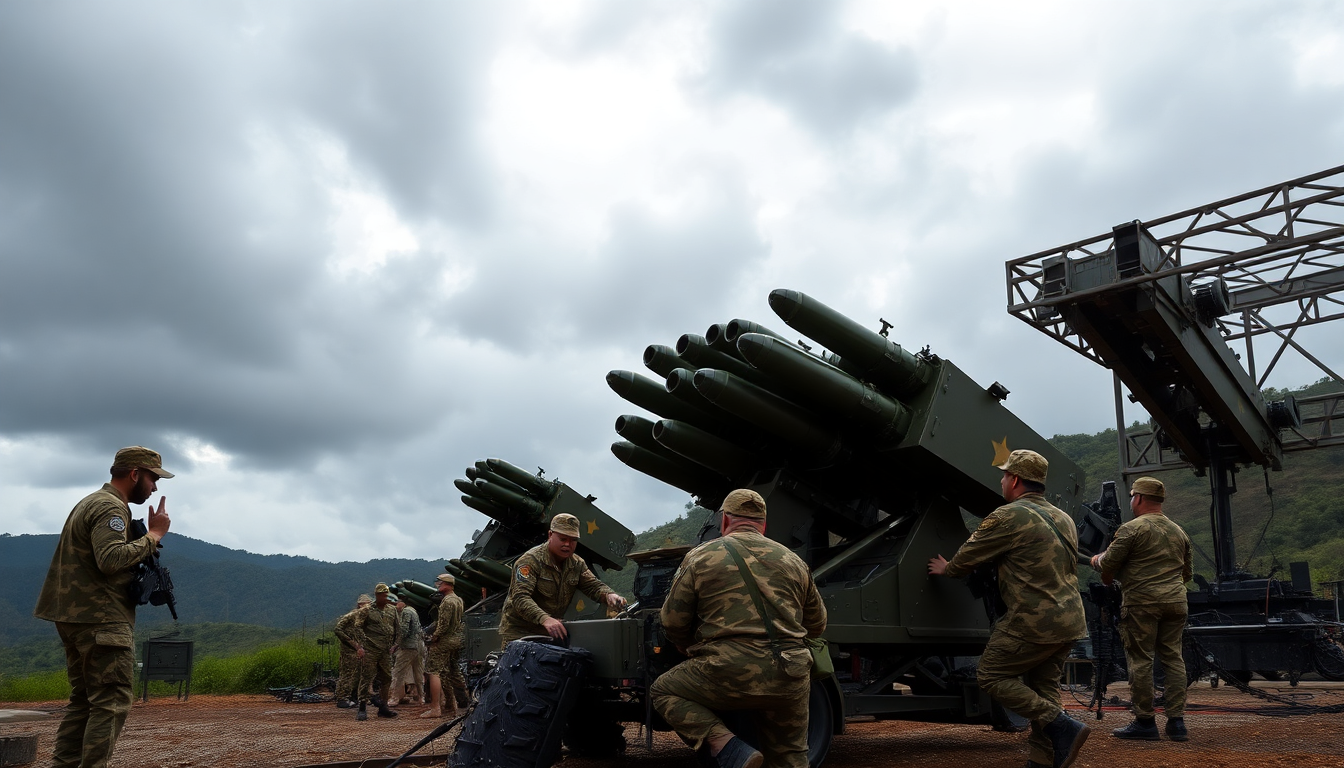Table of Contents
Imagine a world where tensions simmer like a pot about to boil over. It’s not just the weather that’s heating up; it’s the military landscape in the Philippines. Amidst whispers of conflict and power plays, the Philippine Army is looking to ramp up its training with advanced missile systems. Because, you know, nothing screams ‘peace’ like a bunch of missiles ready to launch. Colonel Louie Dema‑ala, the Army’s spokesman, made it clear that the arrival of more Typhon launchers—those fancy Medium Range Capability systems—would be more than just welcomed; it’s practically a necessity. But, of course, no decisions have been officially made yet. Isn’t that just perfect? Waiting for the big boys to make up their minds while the world hangs in limbo.
Why the sudden interest in missile systems?
As regional tensions rise, so does the appetite for more advanced military capabilities. The first Typhon system made its debut in April 2024 during joint exercises with the US, marking a bold step into the fray of global military politics. With the ability to fire Tomahawk and SM-6 missiles, capable of reaching up to 2,000 kilometers, it’s no wonder the Philippines is itching for more. Imagine being able to strike parts of the South China Sea or even encroach upon southern China’s territory. It’s like a twisted game of chess where the stakes are higher than your average poker night. And yet, here we are, waiting for the green light. Isn’t this the kind of thrill that keeps you up at night?
The implications of more missile systems
Now, let’s get down to the nitty-gritty. More Typhon systems mean more training, more capabilities, and inevitably, more confrontation. Dema‑ala emphasized that additional deployments would fast-track their training, which sounds impressive—until you realize you’re gearing up for potential conflict. Isn’t it just delightful to think of a military preparing for war while the rest of us are just trying to get through the day? And sure, they’re all about “defensive measures,” but let’s not kid ourselves. The more toys you have, the more likely you are to play with them. It’s like giving a kid a shiny new car and expecting them not to take it for a joyride.
Training vs. reality
Training on these advanced systems has been limited to a select few, which raises some eyebrows. How does one prepare for the complexities of modern warfare when only a handful of personnel get to play with the big toys? It’s like a VIP club where the bouncer decides who gets in while the rest stand outside, peeking through the glass, salivating over the possibility of joining the elite. The reality is, the more these systems are deployed, the more pressure there is on the Philippine Army to ensure its personnel are adequately trained. But who are we kidding? In the chaotic world of military affairs, training often takes a back seat to the politics of fear and intimidation.
So, as we sit back and watch the Philippines flirt with advanced missile technology, one can’t help but wonder: what’s the endgame here? Are we heading towards a glorified arms race, or is it merely a strategic move to bolster defenses against perceived threats? As the dust settles on the latest military exercises and the Typhon remains stationed in northern Luzon, the question lingers. Will more weapons really lead to peace, or are we just one misstep away from a full-blown conflict? Ah, the beauty of geopolitics—so wonderfully complex and yet so frustratingly simple.


